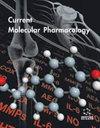MicroRNA-21 在心血管疾病中的双重作用综述:风险因素或潜在治疗靶点
IF 2.9
4区 生物学
Q3 BIOCHEMISTRY & MOLECULAR BIOLOGY
引用次数: 0
摘要
:心血管疾病(CVD)是现代世界发病率和死亡率的首要原因,其发病率正以惊人的速度增长。越来越多的证据表明,microRNA 在心血管系统中发挥着重要功能,并强调了它们作为心血管疾病诊断和治疗靶点的新时代应用潜力,可以改善预后,延长患者寿命。在 2,000 多种 microRNA 中,microRNA-21 [miR-21] 在人类心脏中高度表达,作为多种常见心脏疾病的潜在生物标志物,它已引起了研究人员的兴趣。在此,我们总结了有关 miR-21 在心血管疾病中的重要作用的最新研究进展,重点是心脏毒性、心律失常、心肌病和高血压。据报道,一些信号通路[TGF-β1/Smad2 信号传导、FGFR1/FGF21/PPARγ、NF-κB/miR-21/SMAD7、miR-21/SPRY1/ERK/mTOR......]和分子靶标[BTG2、PDCD4、PTEN、STAT3......]至少部分受 miR-21 控制,并与心血管疾病的发病机制有关。大多数研究强调了 miR-21 在心脏损伤中的心脏保护功能,而另一些研究则表明,这种 miR 在患者血清/组织中升高,会促进纤维化和心脏功能障碍。这种双重作用的原因是,miR-21 具有多种调控功能,取决于微环境、下游信号传导和靶基因,这表明针对细胞类型的研究应得到更多关注。随着研究的深入,miR-21 可被视为一种新型的定制疗法,具有良好的疗效。本文章由计算机程序翻译,如有差异,请以英文原文为准。
A Review of the Dual Role of MicroRNA-21 in Cardiovascular Diseases: Risk Factor or a Potential Therapeutic Target
: Cardiovascular diseases [CVD] are the number one reason for morbidity and mortality in the modern world, and their incidence is increasing at an incredible pace. Increasing evidence has shown the significant functions of microRNAs in the cardiovascular system and has highlighted their potential application as a new era of diagnostic and therapeutic targets for CVD that can improve the prognosis and life expectancy of patients. Among more than 2,000 microRNAs, microRNA-21 [miR-21] is highly expressed in human hearts and has earned the interest of researchers as a potential biomarker in a wide range of common heart conditions. Here, we summarized recent research progress regarding the significant role of miR-21 in CVD, focusing on cardiotoxicity, heart arrhythmias, cardiomyopathies, and hypertension. Several signaling pathways [TGF-β1/Smad2 signaling, FGFR1/FGF21/PPARγ, NF-κB/miR-21/SMAD7, miR-21/SPRY1/ERK/mTOR …] and molecular targets [BTG2, PDCD4, PTEN, STAT3…] were reported to be controlled, at least partially, by miR-21 and are linked to CVD pathogenesis. Most investigations highlighted miR-21 cardioprotective functions in heart injury, while some other studies showed that this miR is elevated in the serum/tissue of patients, promoting fibrosis and cardiac dysfunction. This dual role can be explained by the fact that miR-21 has multiple regulatory functions depending on the microenvironment, downstream signaling, and target genes, which indicates that cell-type-specific investigations should receive more attention. With further investigations, miR-21 can be considered a novel tailored therapy with favorable outcomes.
求助全文
通过发布文献求助,成功后即可免费获取论文全文。
去求助
来源期刊

Current molecular pharmacology
Pharmacology, Toxicology and Pharmaceutics-Drug Discovery
CiteScore
4.90
自引率
3.70%
发文量
112
期刊介绍:
Current Molecular Pharmacology aims to publish the latest developments in cellular and molecular pharmacology with a major emphasis on the mechanism of action of novel drugs under development, innovative pharmacological technologies, cell signaling, transduction pathway analysis, genomics, proteomics, and metabonomics applications to drug action. An additional focus will be the way in which normal biological function is illuminated by knowledge of the action of drugs at the cellular and molecular level. The journal publishes full-length/mini reviews, original research articles and thematic issues on molecular pharmacology.
Current Molecular Pharmacology is an essential journal for every scientist who is involved in drug design and discovery, target identification, target validation, preclinical and clinical development of drugs therapeutically useful in human disease.
 求助内容:
求助内容: 应助结果提醒方式:
应助结果提醒方式:


